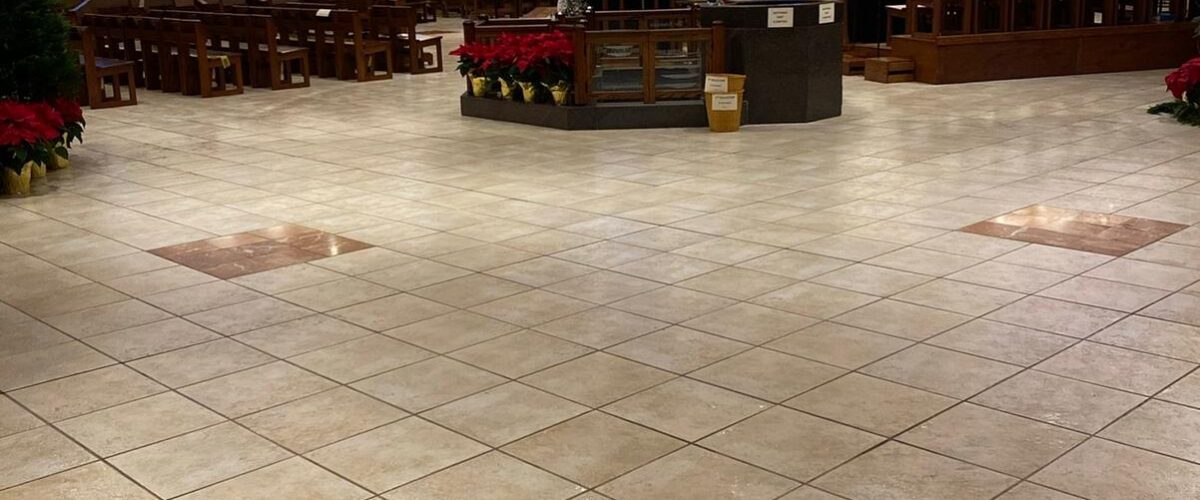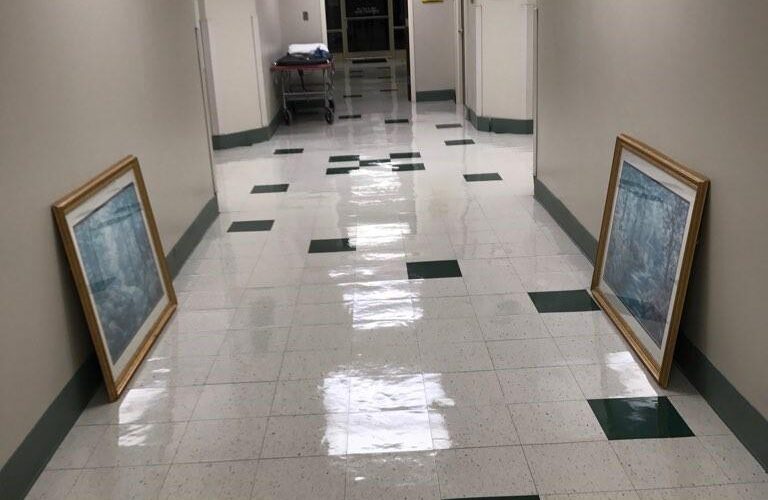Therefore, cleanliness is not merely an issue of personal taste but something essential that underlies patient safety and health care. As centers of recovery and cure, these critical medical offices should uphold impeccably high cleanliness levels beyond mere preferences. Clean and germ-free surfaces are essential in such environments. These professionals provide crucial support in preventing diseases, protecting those seeking medical help, and the committed personnel offering care. Our examination of medical office cleaning practices will be exhaustive and detailed in its analysis of keeping surfaces spotlessly clean and sterile – that is, work to be carried out by no means done but as something owed. When we understand how an immaculate environment affects patient outcomes in such settings, we unpack the intricate details and important discoveries behind preserving such critical spaces.
The sterilization process begins at the reception desk and continues around medical care service to be effective. The whole place, including its surfaces, is a potential carrier of life-threatening microbes. The waiting areas, where patients sit waiting to be attended to, and the actual examination rooms where the doctors make their diagnoses. Therefore, appropriate cleaning procedures and sensible utilization of disinfectants are crucial. This holistic approach includes a thorough cleaning regimen, the use of medical–grade disinfectants, and training of the cleaners on the current sterilization practices.
Reach Us

Importance of Sterile Surfaces:
- There Are Several Reasons Why Sterile Surfaces Are Important In Medical Offices. It minimizes the danger of acquiring a Health Care Association Infection (HAI), an infection contracted by a patient while undergoing medical care. The Centers for Disease Control and Prevention (CDC) report that approximately one in every thirty-one hospital patients contracts HAIs on any given day in the United States. These infections are minimal when proper cleaning protocols are applied.
- Secondly, they give a feeling of trust to patients. Creating this favorable impression leads to trust in the abilities of the healthcare provider who can offer these clean-up services. Patients would generally feel safer and happier in a well-organized and clean medical office.
- In addition, maintaining sterile surfaces reduces healthcare-associated infections, increases patient’s trust, and enhances the set medical care standards. Sterility is central to surgery, injections, and wound dressing involving aseptic techniques. In such instances, sterile surfaces are necessary to protect against contamination and other possible problems and preserve the patient’s health and safety.
- It is also essential in keeping non-patient sterile surfaces. It ensures that the providers are well protected, and there is safety for those working in the hospital. Healthcare providers, by observing the strict sterilization protocols, can reduce their infection probability by infective agents, which improves the working environment for health. Consequently, this ensures that staff will remain healthy and are less likely to contract an infection from one another within the medical practice that could be avoidable.
Guide to Medical Office Cleaning Standards
Regular Training and Education:
Afterward, investing in ongoing training and education for the cleaning staff is vital. This involves appropriate training on how to handle cleaning agents, disinfectants, and various cleaning methods. Moreover, employees need more training on the significance of their contribution towards maintaining hygiene standards.
Adherence to Protocols:
Cleaning protocols must be established and implemented accurately. Create a complete cleaning list for daily, weekly, and monthly house cleaning tasks. Clean and disinfect frequently touched surfaces such as doorknobs, light switches, and reception counters multiple times daily.
Use of Appropriate Cleaning Agents:
All cleaning agents are not effective in a medical environment. Disinfectants that effectively kill a broad spectrum of bacteria and viruses will be necessary. Cleaning agents must be chosen according to the surfaces being cleaned. For example, various agents are needed to clean stainless steel medical instruments instead of wooden furniture.
Proper Waste Disposal:
Medicos create other waste categories, such as hazardous and non-hazardous materials. Set up a strong refuse collection policy conforming to all regulatory requirements. Proper disposal of contaminated materials is by placing them in separate containers explicitly marked for it. Segregation and disposition of non–hazardous waste, as required by law.
Utilization of Advanced Cleaning Equipment:
Advancing cleaning procedures can be achieved through investment with the acquisition of state-of-the-art cleaning tools like steam cleaners and UVC disinfectors. They are safe for the environment and effective at disinfecting surfaces using the highest steam temperature instead of chemicals. Ultraviolet light emitted by UV-C devices kills or inactivates bacteria and viruses, adding another level of protection against infection.
Regular Monitoring and Quality Assurance:
Introduce a system of routine monitoring and quality control measures. Every so often, test for hygiene in the medical office; make sure it passes the test for cleanliness every time. Such actions can include shock inspections and feedback from staff and clients. Ensure there is a feedback loop through which all concerns can be addressed swiftly and adjustments to relevant cleaning techniques.
Our Services Areas
Memphis TN > Cordova TN > Ridgeland MS > Southaven MS > Jackson MS
Personal Protective Equipment (PPE) for Cleaning Staff:
Ensure the cleaning staff is equipped with necessary PPE, including gloves, masks, and gowns. That is in addition to providing security and preventing possible contamination propagation from one area to another. Dispose of and replace PPE according to set guides for effectiveness.
Special Attention to Waiting Areas and Restrooms:
Be especially careful about waiting rooms and bathrooms, for a patient can be found more often here. Regularly clean and disinfect waiting room chairs, magazines, etc., throughout the day. Make sure soap dispensers are constantly replenished, as well as the use of a paper towel or hand dryer. Cleanliness in such places is crucial for the general perception of a medical office and for minimizing chances of cross-contamination.
Deep Cleaning Sessions:
In addition to regular cleaning routines, it is essential to schedule deep cleaning sessions. Deep cleaning involves thoroughly cleaning and disinfecting all surfaces, even those not cleaned daily. This comprehensive approach eliminates hidden pathogens, resulting in a truly sterile environment.
Focus on Waiting Areas:
Waiting areas are often the first area that patients encounter. It is essential to keep these areas spotlessly clean. Clean and disinfect chairs, tables, and reading materials regularly. Consider using easy-to-clean materials and reducing soft furnishings that can harbor germs.
Collaboration with Professional Cleaning Services:
Medical offices often find it beneficial to collaborate with professional cleaning services specializing in healthcare facilities. These services have the necessary expertise, experience, and specialized equipment to maintain the highest standards of cleanliness.
Environmental Considerations:
When it comes to cleanliness, it’s essential to focus on keeping surfaces sterile and consider the impact of our cleaning practices on the environment. Opt for eco-friendly cleaning products and adopt sustainable cleaning methods. By being conscious of our impact, we can contribute to a healthier planet without sacrificing hygiene.
Conclusion:
Maintaining the highest level of cleanliness in healthcare is crucial. It’s not just a routine task; it represents a deep dedication to patient safety, well-being, and public health. Keeping medical offices clean requires unwavering commitment, ongoing education, and the use of advanced tools and techniques to ensure surfaces remain sterile.
Comprehensive training programs for healthcare professionals are crucial investments. These programs should cover the basic principles of hygiene and advanced methods to address emerging challenges. It is essential that healthcare professionals strictly adhere to rigorous protocols and guidelines based on evidence-based practices. We must also prioritize the environmental impact of cleaning practices in medical facilities. By using cleaning agents, disposable materials, and energy-efficient equipment responsibly, we show our commitment not only to patient health but also to environmental sustainability. Finding a balance between maintaining high cleanliness standards and implementing eco-friendly practices demonstrates a thoughtful approach that benefits patients and the planet.
The drive for clean surfaces in medical environments goes beyond routine practice; it represents a significant commitment. It shows a dedication to prioritizing health, maintaining the highest ethical standards, and creating a safe environment for healing. By wholeheartedly embracing this commitment, medical offices inspire confidence in patients, reinforcing their trust in the healthcare system and demonstrating unparalleled professionalism and care.









